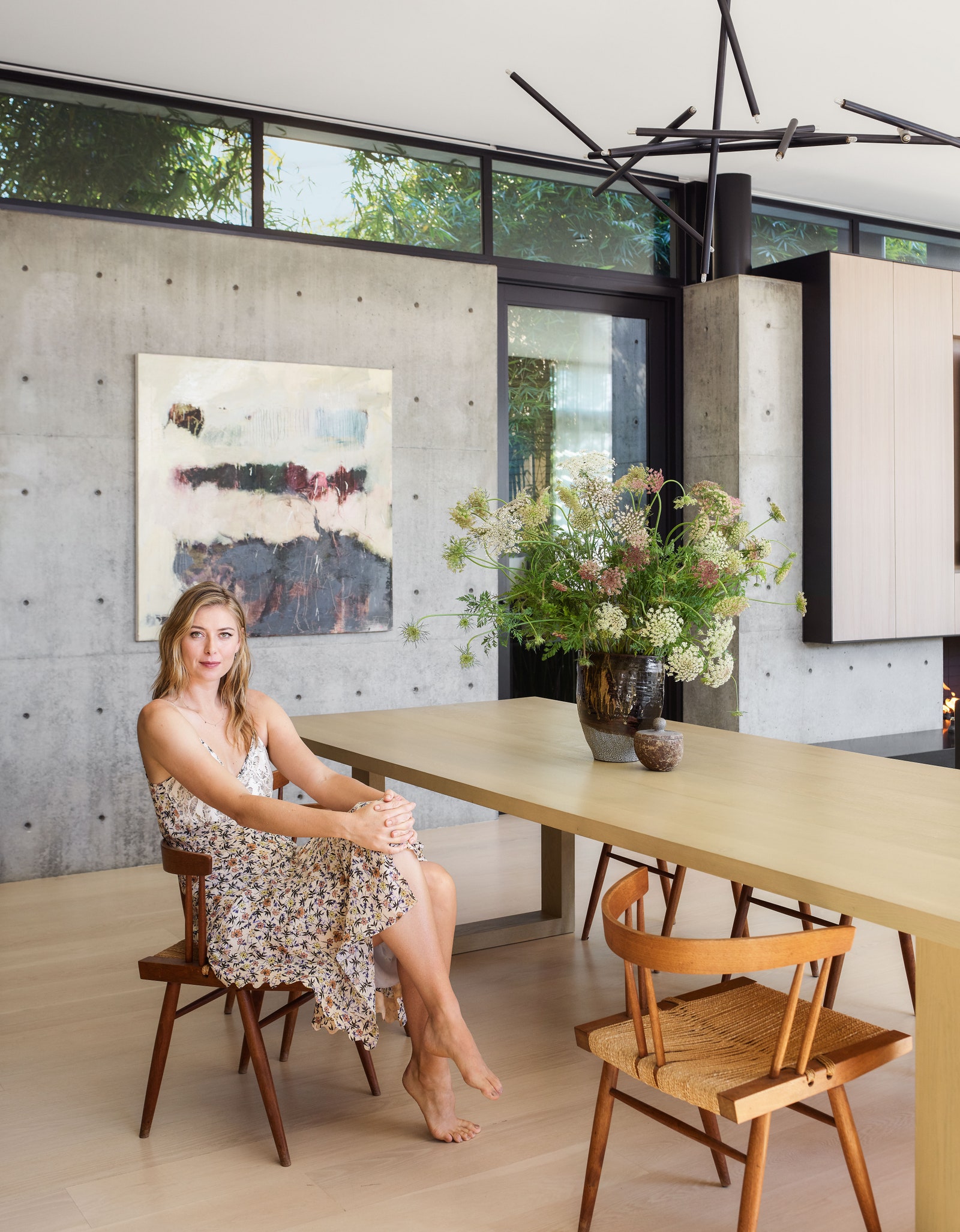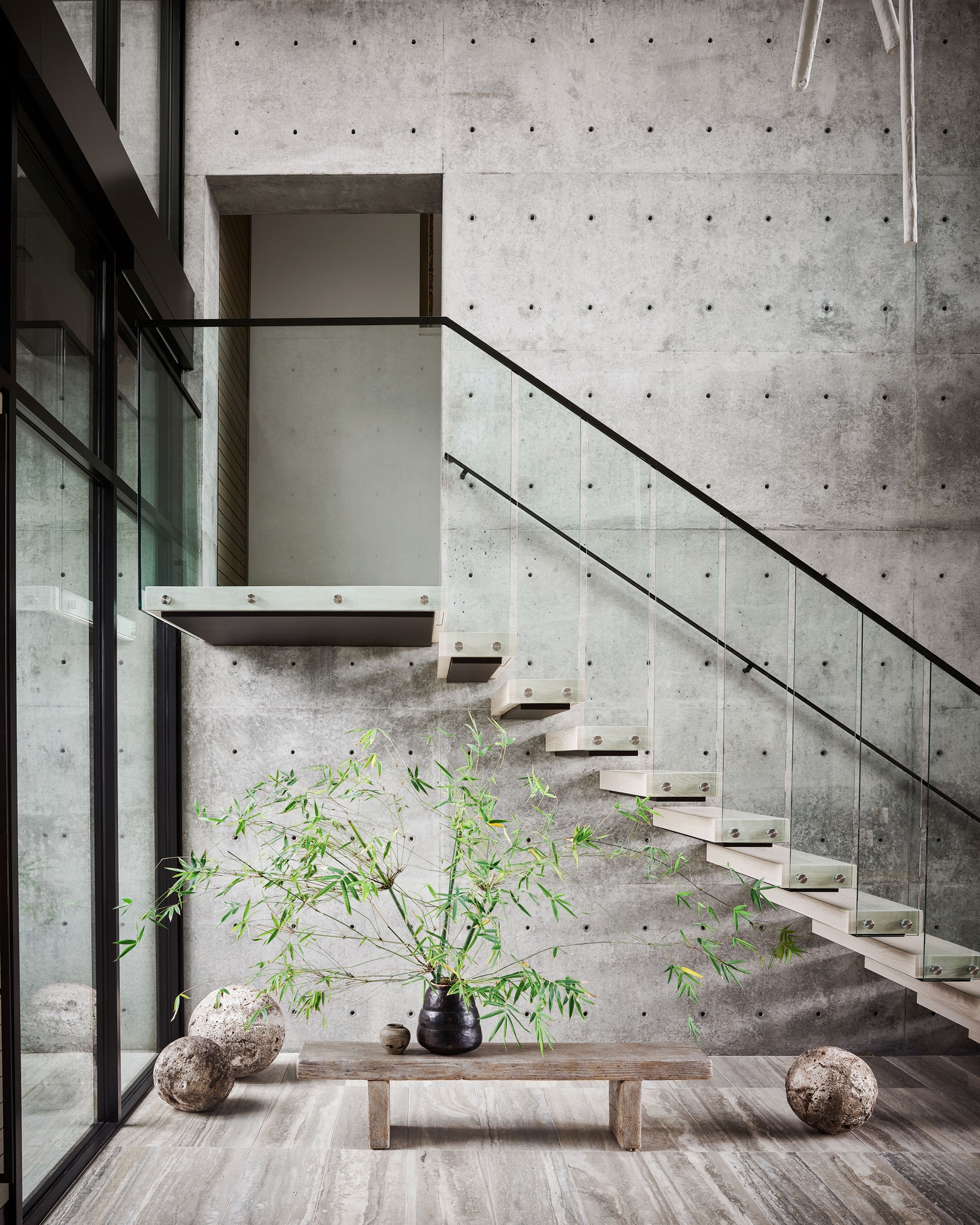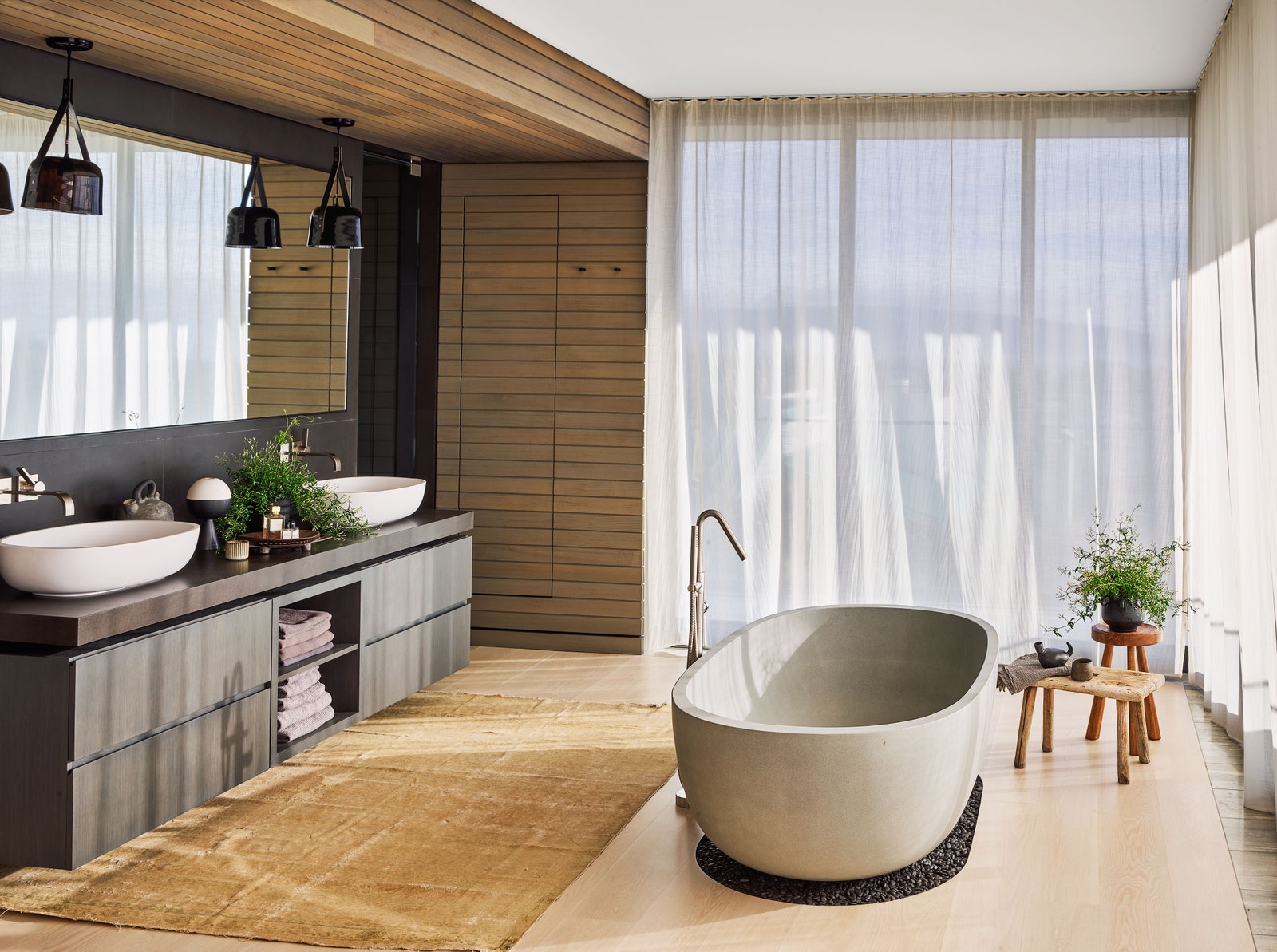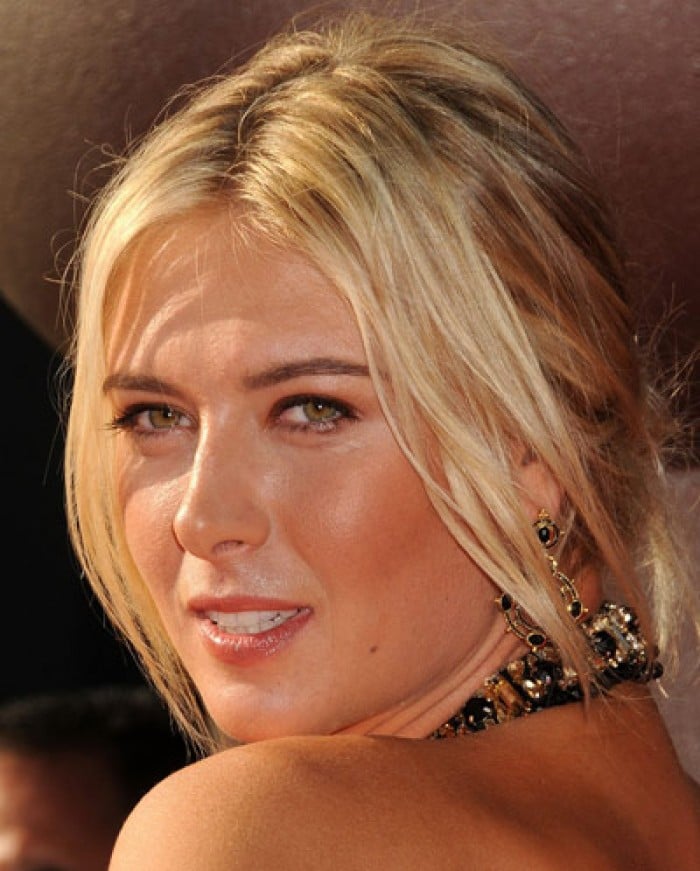Talk to anyone who worked with Maria Sharapova on the design, construction, and decoration of her discreetly ravishing home in Los Angeles and their responses invariably follow the same themes: that the tennis star maintained a resolute vision of how she wanted the residence to feel and function from the earliest phases of the project; that she was one of the most intellectually curious and committed clients they’ve ever encountered; and that her style and spirit—as a supremely confident athlete, aesthete, and businesswoman—animate every inch of the property. In short, Maria Sharapova is a boss.
“I was obsessed with the process of making this home. I’d jump off a plane from a tournament and go straight to the work site or to the architect’s office or to a kitchen manufacturer. This was my project, and I wasn’t going to delegate any part of it,” insists the Russian-born phenom.
As with many sports celebrities who have been in the public eye since they were children, it’s easy to forget just how young Sharapova really is. Now 32, the statuesque player first attained the world number-one ranking in women’s tennis at the age of 18. She is one of only 10 athletes in the history of the women’s game to achieve a career Grand Slam, winning all four majors. Off the court, Sharapova has flexed her business muscles through a broad array of endorsements and sponsorships, the creation of her signature apparel line for Nike, the launch of Sugarpova, her premium candy–and–chocolate company, and other ventures. At present, she is developing sports and training venues keyed to principles of holistic health and wellness.
“Maria’s work ethic is astonishing. She’s competitive as hell, in the best possible way, and she was involved in every single aspect of this house, down to the most minute detail and material permutation,” says architect Grant Kirkpatrick of KAA Design, who oversaw the project in tandem with his partner, Duan Tran. “To say that she simply collaborated with us does not adequately describe her dedication and influence on the design,” he adds.
The three-story house is located on a sloping site with expansive ocean views from Palos Verdes to Malibu, with Catalina Island hovering in the distance—a dazzling panorama that unfolds with particular drama from Sharapova’s sun-kissed bedroom and bath. A luminous double-height entry gallery, defined by walls of sleek, panel-formed concrete and punctuated with a stair and bridge, opens out to an expansive pool and alfresco entertaining area. The central volume is flanked by two wings—one for the open living/dining/kitchen sweep on the ground floor and the master suite above, and the other allocated to guest quarters, with bedrooms on the lower level and a well-appointed suite on the upper. There’s also a kick-back basement lounge with a bowling alley.
“I was inspired by Japanese architecture and minimalist aesthetics,” Sharapova says of the spare, elegant design and decor. “I didn’t grow up with lots of stuff around. For me, uncluttered means healthy. If you don’t use something, you don’t need it.”
For all its lean beauty, however, the home has no shortage of warmth, soul, and delight. Architectural details of bleached oak, cedar, and silver travertine provide a rich material counterpoint to the wide expanses of concrete and glass. A sculptural wood screen—which penetrates the façade as it undulates between outdoors and in—throws an organic curve into the largely rectilinear composition, modulating the influx of sunlight and providing privacy from the street. Even the positioning of the pool is calculated as a giddy surprise. When the sliding doors of the living/dining area are pulled away, one can simply turn around from the dining table or sofa and hop right into the water.






